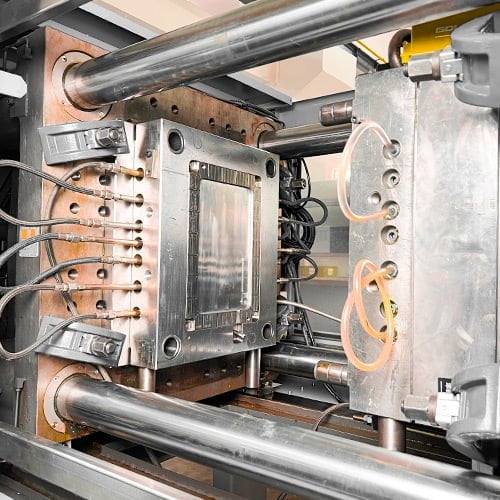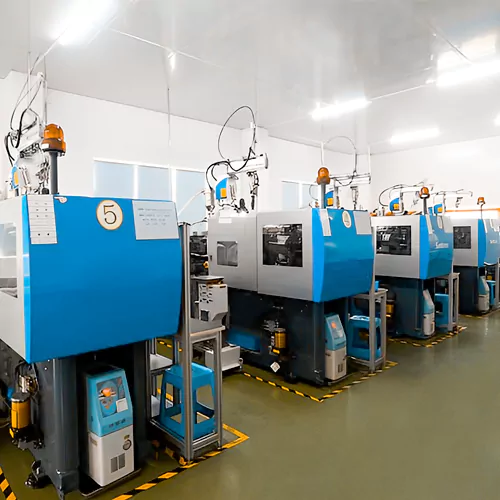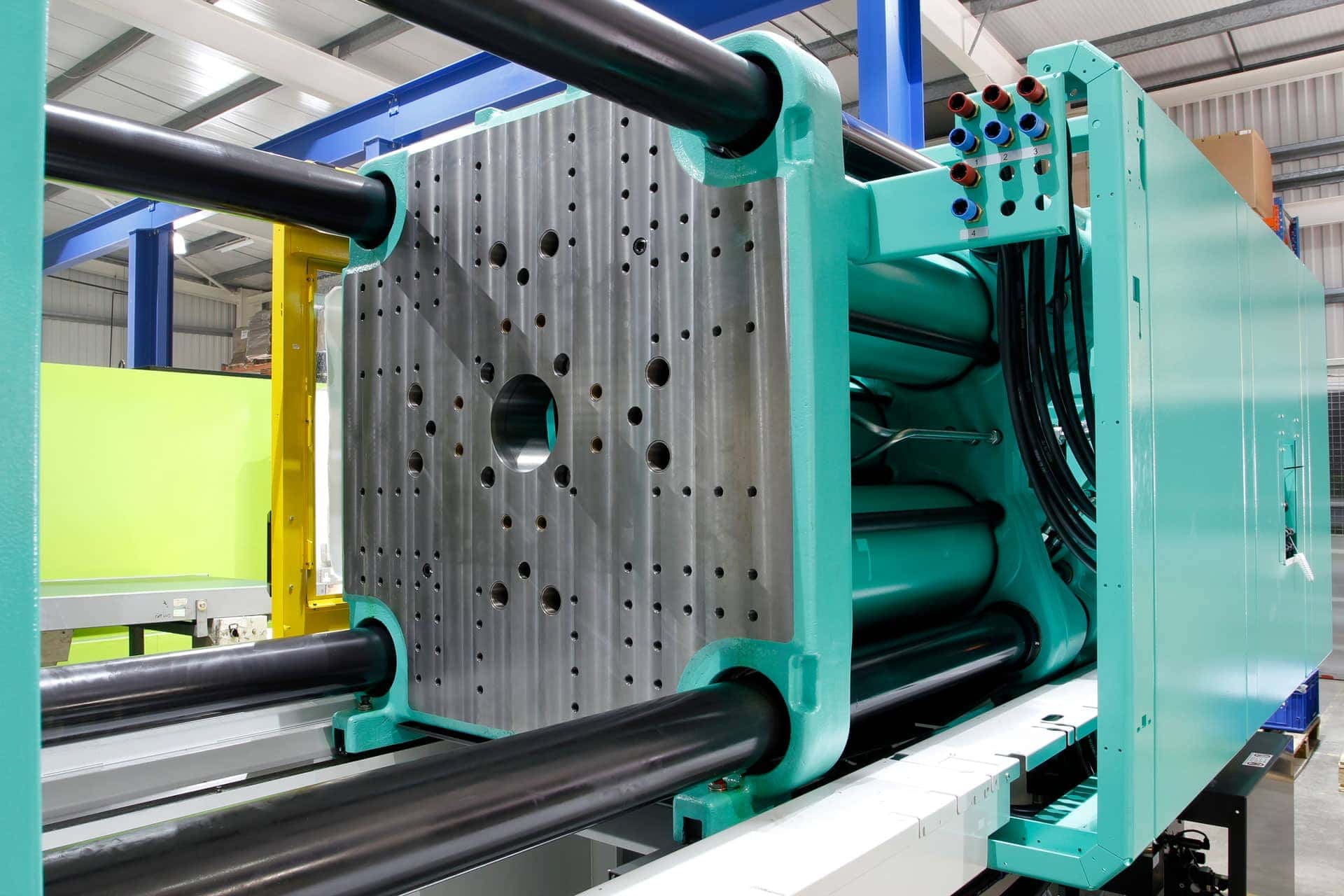Recognizing the Basics of Plastic Shot Molding Processes
Plastic injection molding offers as a keystone of contemporary production, giving a methodical technique to generating complex elements with accuracy. This procedure not just encompasses the fundamental steps of melting and infusing products right into mold and mildews but also includes a nuanced understanding of different affecting factors, such as temperature and pressure. As sectors significantly require effectiveness and quality, the details of this technique come to be more essential. Exploring these vital components can disclose just how even small adjustments can lead to significant improvements in production outcomes, raising questions about the potential for development in this recognized process.
What Is Plastic Injection Molding?
Plastic shot molding is an extensively used manufacturing procedure that transforms thermosetting and polycarbonate materials right into precise and complicated shapes. This method is preferred for its ability to generate high volumes of similar get rid of exceptional precision, making it an important approach in various sectors, consisting of automobile, durable goods, and medical gadgets.
The procedure involves melting the picked plastic product and injecting it into a mold and mildew under high stress. The mold, created to the requirements of the desired part, enables the liquified plastic to take form as it cools and solidifies. As soon as the product has hardened, the mold is opened up, and the ended up part is ejected.
Plastic injection molding provides a number of benefits, consisting of minimized waste, uniformity in manufacturing, and the capacity to incorporate complex styles that might be testing with other producing techniques. In addition, it sustains a broad series of materials, each supplying one-of-a-kind buildings that can be customized for details applications. As sectors proceed to introduce, plastic shot molding continues to be at the center, making it possible for the growth of innovative items that fulfill advancing customer needs.
The Shot Molding Process
The injection molding procedure is an innovative strategy that entails numerous crucial stages to produce top notch plastic parts. Plastic pellets are fed into a warmed barrel where they are thawed into a viscous fluid. This molten plastic is after that infused under high pressure right into a precision-engineered mold and mildew, which shapes the material right into the preferred form.
As soon as the mold and mildew is filled up, the plastic is allowed to cool down and strengthen, taking the shape of the mold and mildew cavity. Cooling time is important, as it affects the cycle time and the last properties of the shaped part. After sufficient air conditioning, the mold opens up, and the completed element is ejected making use of ejector pins.

Materials Used in Injection Molding
Various materials can be utilized in the shot molding procedure, each offering one-of-a-kind residential or commercial properties that cater to certain applications. The most typically made use of products include thermoplastics, thermosetting plastics, and elastomers.

Thermosetting plastics, like epoxy and phenolic resins, undertake a chemical change throughout the healing process, causing a rigid, stringent structure. These products are perfect for applications calling for high heat resistance and structural honesty, typically made use of in automotive parts and electric insulators.
Elastomers, consisting of silicone and rubber-based materials, offer adaptability and resilience. Their distinct buildings make them suitable for applications that demand elasticity, such as gaskets and seals.
In addition, specialty materials like bio-based plastics and composites are acquiring traction for their ecological advantages and boosted efficiency features, broadening the scope of injection molding applications in various markets. Understanding the buildings of these materials is critical for selecting the appropriate type for details projects.
Advantages of Shot Molding
Injection molding sticks out as a very reliable production procedure that uses many benefits for creating intricate components with accuracy. Among the most substantial benefits additional resources is the capability to produce intricate designs that would certainly be tough or impossible to attain with various other techniques (Plastic Injection Molding). The process enables detailed attributes and limited tolerances, ensuring high-quality parts
Furthermore, injection molding is recognized for its fast production capacities, making it an excellent selection for high-volume manufacturing. Once the mold and mildew is created, components can be created rapidly, reducing preparations and enhancing total efficiency. This efficiency not just lowers manufacturing costs yet additionally offers a competitive side on the market.
The versatility of products used in injection molding better improves its allure. A large range of thermoplastics and thermosetting polymers can be utilized, permitting producers to pick materials that finest fulfill their particular demands, including stamina, warmth, and adaptability resistance.
Furthermore, the procedure decreases waste, as excess material can typically be reused and hop over to here recycled. This sustainability aspect contributes to a minimized ecological influence, making injection molding an accountable production selection. On the whole, the advantages of injection molding make it a favored technique for lots of industries.
Elements Impacting Item Top Quality
While countless factors can influence product quality in injection molding, understanding these aspects is vital for achieving ideal outcomes. Key facets include product option, refining parameters, and mold design.
Material option plays a vital duty, as different polymers exhibit one-of-a-kind properties that influence flowability, strength, and thermal security. Insufficient product option can cause issues such as warping or insufficient filling.
Processing specifications, consisting of temperature level, cycle, and pressure time, have to be thoroughly regulated. Variations in these settings can lead to variances partially measurements and surface area finish. For example, exceedingly high temperatures may trigger destruction of the polymer, while insufficient stress can cause brief shots.
Mold and mildew style is similarly essential, as it identifies the circulation of the molten plastic and the cooling procedure. Poorly designed molds may cause unequal air conditioning rates, resulting in residual stresses and dimensional errors.

Verdict
To conclude, plastic shot molding functions as an important manufacturing process that allows the effective manufacturing of premium parts. Proficiency of the shot molding process, consisting of the understanding of products and the impact of numerous elements on product top quality, is necessary for accomplishing optimal results. The advantages of this method, such as cost-effectiveness and layout adaptability, additional emphasize its relevance throughout several sectors, strengthening its standing as a preferred selection for high-volume manufacturing.
Plastic shot molding serves as a cornerstone of modern-day production, giving a systematic strategy to generating intricate elements with accuracy.Plastic shot molding provides numerous advantages, consisting of decreased waste, uniformity in production, and the ability to integrate complex styles that may be testing with other making approaches (Plastic Injection Molding). As sectors proceed to introduce, plastic shot molding continues to be at the leading edge, enabling the advancement of advanced products that fulfill advancing consumer demands
The injection molding process is an innovative technique that directory involves numerous key stages to produce premium plastic components.In final thought, plastic shot molding serves as an essential production procedure that makes it possible for the efficient manufacturing of top quality components.
Comments on “The Duty of Plastic Injection Molding in Developing Cost-efficient Industrial Components”